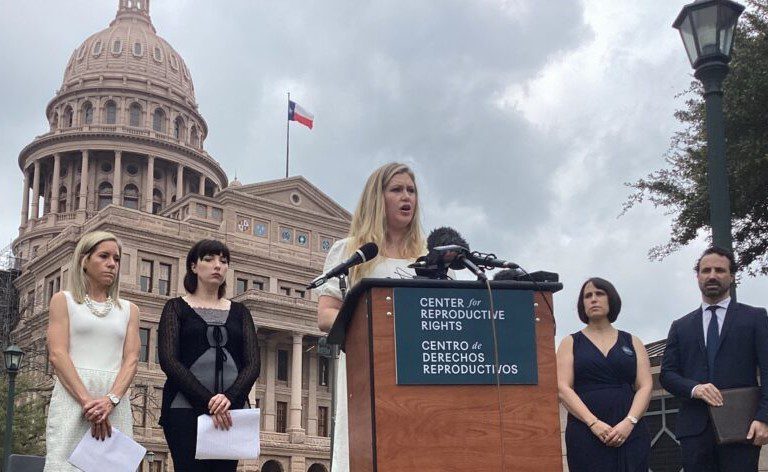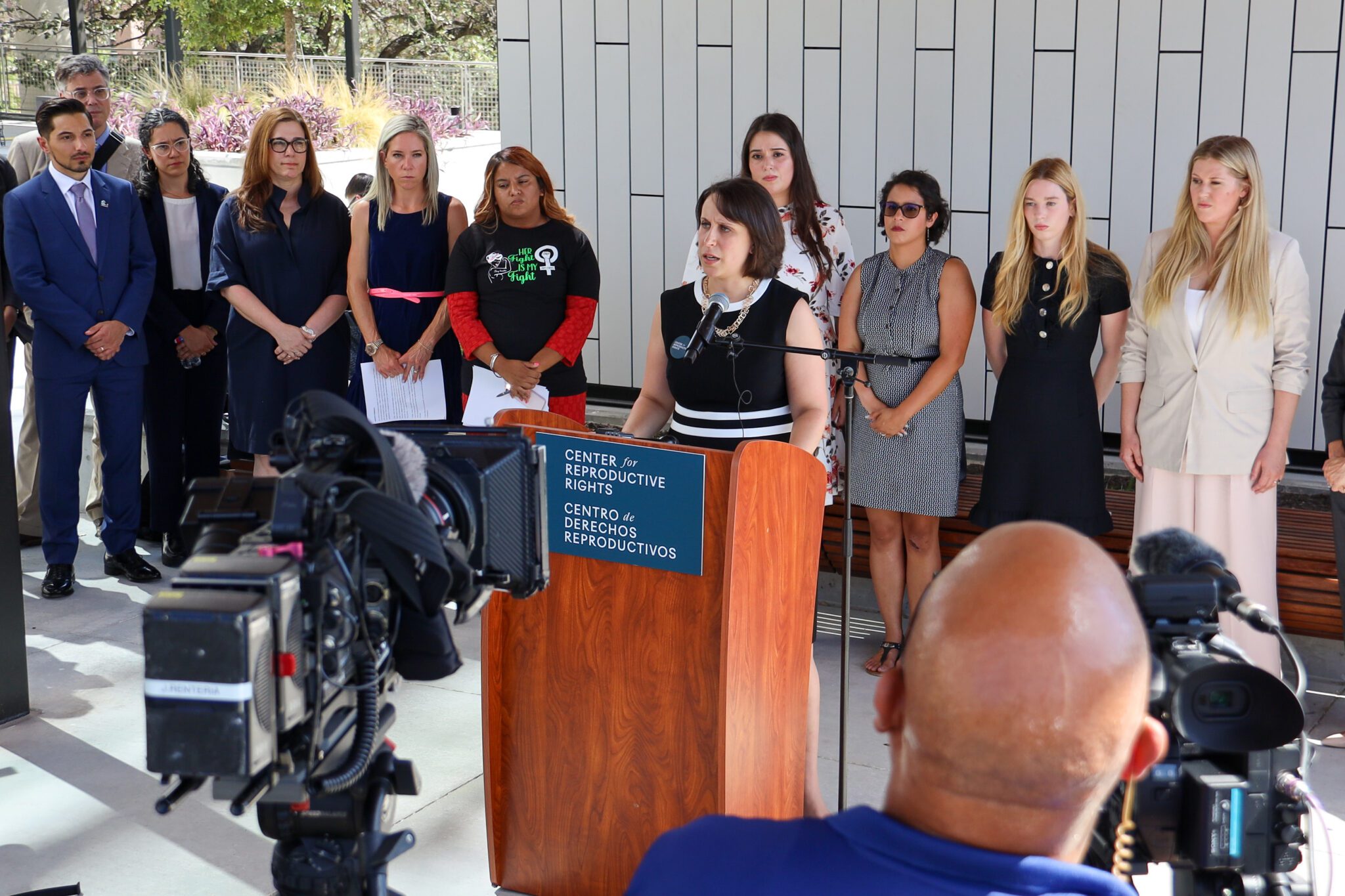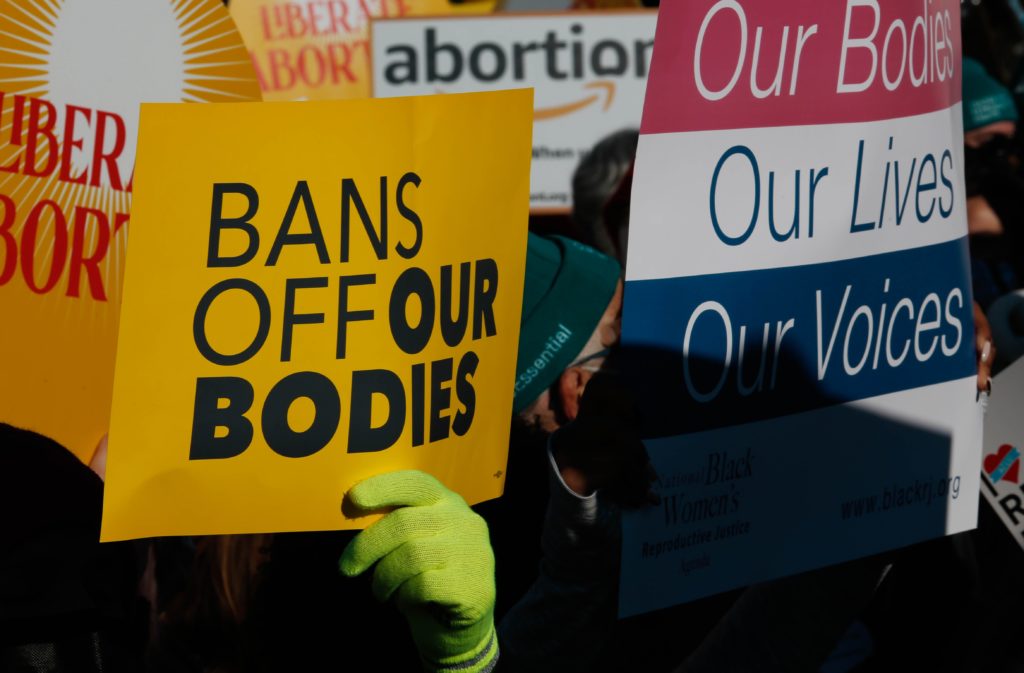Abortion Is Essential Health Care, Even With Wanted Pregnancies
Patient stories serve as stark reminders that abortion care is a necessary, life-saving procedure crucial for treating many dangerous pregnancy conditions.

When she was 18 weeks pregnant with her first child, Amanda Zurawski’s water broke, a relatively common obstetric complication referred to as preterm premature rupture of membranes, or “PPROM.”
Because the amniotic sac and fluid surrounding a fetus is essential to its healthy development, there is no chance of survival when this protective membrane breaks very early in a pregnancy. Doctors trained to provide obstetric care typically offer an immediate abortion procedure to patients like Zurawski to prevent a severe and possibly life-threatening infection, caused by bacteria entering the uterus through the ruptured membrane.
But since the U.S. Supreme Court overturned Roe v. Wade and eliminated the constitutional right to abortion in 2022, the treatment of pregnant people in states that have banned abortion is anything but typical. Instead, the threat of legal liability is forcing medical professionals to delay or deny necessary obstetric care.
According to a national survey conducted this spring by KFF, a health policy organization, 68 percent of obstetrician-gynecologists (OB-GYNs) believe the Dobbs ruling has worsened their ability to manage pregnancy-related emergencies. Additionally, 64 percent of OB-GYNs say that pregnancy-related mortality has worsened since Roe was overturned.
This leaves women like Zurawski and other pregnant people in states like Texas without access to abortion, putting their lives, health and future fertility at risk.
Troubling Numbers Out of Texas
Texas’s state “vigilante” law banning abortion at approximately six weeks of pregnancy has been in effect since September 2021.
A recent American Journal of Obstetrics & Gynecology study found that, between Sept. 21, 2021, and May 20, 2022, state limits on the management of obstetrical complications resulted in 57% of patients at two Texas hospitals having a serious maternal morbidity, as compared with 33% of patients treated for similar complications in states without such legislation.
In 2022, infant mortality in Texas increased by 11.5%, according to preliminary data from the Texas Department of State Health Services, with infant deaths caused by “severe genetic and birth defects” rising by 21.6%.
Center’s Case Represents Women Denied Abortion Care Despite Dangerous Pregnancy Complications
Zurawski is the lead plaintiff in Zurawski v. State of Texas, a case brought by the Center for Reproductive Rights on behalf of 13 Texas women who were denied abortion care under the state’s abortion bans, and two obstetrician-gynecologists. (A third OB-GYN is a patient plaintiff.) Each of the women denied care had wanted pregnancies—yet each needed an abortion after experiencing an obstetric complication or learning her fetus had a severe fetal diagnosis.
Their stories serve as stark reminders that abortion care is a necessary, life-saving procedure crucial for treating many dangerous pregnancy conditions.
U.S. women already have the highest rate of maternal deaths related to complications of pregnancy and childbirth among high-income countries, according to Commonwealth Fund data from 2020. According to recent data from the Centers for Disease Control and Prevention (CDC), in 2021 there were 32.9 maternal deaths for every 100,000 live births in the U.S., and Black women were 2.6 times more likely die from pregnancy-related causes than white women.
The OB-GYN plaintiffs in the Zurawski case argue that Texas’s abortion bans—including its “vigilante” law that took effect in 2021—interfere with their ability to provide pregnant people with standard medical care. Physicians who provide abortion care that does not meet the state’s “medical emergency” exception face fines of at least $100,000, up to 99 years in prison and loss of their state medical license.
Pregnant Patients with Pregnancy Complications Are Cut Off from Care
A recent study, titled Care Post-Roe: Documenting cases of poor-quality care since the Dobbs decision, documents the further harm that patients with wanted pregnancies are experiencing when they seek care in states with abortion bans, including Texas. Released in May by the University of California San Francisco’s Advancing New Standards in Reproductive Health (ANSIRH), the report highlights common pregnancy complications and medical conditions that require immediate abortion care.
Such complications include:
- Second trimester complications including preterm premature rupture of membranes (PPROM), hemorrhage or severe bleeding, dilation of the cervix and hypertension or high blood pressure.
- Severe fetal diagnoses that are unlikely to result in the birth of a child with sustained life.
- Ectopic pregnancy, a highly dangerous, nonviable pregnancy that occurs when a fertilized egg implants outside of the uterus, most commonly in the fallopian tubes.
- Underlying medical conditions that make continuing a pregnancy dangerous; examples can include severe kidney disease or cancer.
Read more about the case.
Zurawski v. State of Texas
Explore case details, news, filings, and more.
Dangers of Delaying and Denying Abortion Care
Zurawski’s condition, preterm premature rupture of membranes, complicates about two to three percent of all pregnancies in the United States, according to the American College of Obstetricians and Gynecologists (ACOG). Three other plaintiffs in the Zurawski case also had their water break early in their wanted pregnancies, each one at a stage of development far before fetal viability.
But none of these women were offered the standard medical care: an abortion. Instead, they all faced barriers to needed care. Among the most challenging was their providers’ hesitancy—due to fear of Texas’ civil and criminal penalties—to help them navigate the complexities of the new abortion bans and access the care necessary to protect their health, lives and future fertility.
Abortion bans prevent physicians and hospital staff from using their best medical judgment to treat pregnancy complications, as they must also consider their risk of criminal prosecution and loss of their medical licenses for breaking these new and often unclear laws.
As Zurawski’s doctors could detect fetal cardiac activity, they would not perform an abortion until she had an acute infection. Three days after her membranes ruptured, she developed sepsis—a life-threatening infection. At that time, she was finally given an emergency abortion—but still spent three days in the ICU fighting for her life. This dangerous delay in her care has also affected her future ability to have children, as Zurawski’s infection scarred her uterus and fallopian tubes and one of her fallopian tubes remains permanently closed.
>> Read about the experiences of all the women in the Zurawski case here.
Hearing Wrap-up: Zurawski v. State of Texas
Find out more about the July 19-20 hearing and watch video replays of the press briefings.
Abortion is a Treatment Option for Pregnancies with Severe Fetal Diagnoses
A pregnant patient sometimes must confront the tragic news that her fetus has a congenital disorder and will die in utero or shortly after birth. In these cases, the patient and her health care provider typically would meet to discuss the treatment options, including abortion.
Samantha Casiano was not given this option. She was 20 weeks pregnant when she found out that her fetus was diagnosed with anencephaly—a neural tube defect that causes a baby to be born without parts of the brain or skull. Sadly, this meant her daughter had no chance of survival.
Unable to obtain an abortion in Texas and unable to afford to travel out of state, take time off work, and find care for her children, Casiano was forced to carry her pregnancy to term. Her baby died four hours after birth, gasping for air.
“Forcing a pregnant person to carry a non-viable fetus to term, when there is no chance of survival, places the patient in unnecessary danger without any potential benefit,” said Dr. Damla Karsan, a Houston-based OB-GYN who is a plaintiff in the Zurawski case.
Four other women in the Zurawski case received a fetal diagnosis of anencephaly, a condition that affects one out of every 4,600 births in the United States, according to the Centers for Disease Control and Prevention.
Increased Risk for Multiple Pregnancies
People who are carrying twin and multiple pregnancies face additional risks to their health without access to abortion.
Ashley Brandt, another plaintiff in the case, learned at 12 weeks that one of her twins had acrania—a lethal condition associated with anencephaly and characterized by the absence of skull bones surrounding the fetal brain. Staying pregnant with both twins reduced the likelihood that the healthy twin would survive. Lauren Miller, also a plaintiff who was pregnant with twins, learned at 12 weeks that one twin had trisomy 18 and would be unlikely to survive.
In both cases, a fetal reduction abortion procedure would reduce risks to the pregnant woman and the healthy twin, yet neither woman was offered this procedure. Instead, they had to travel to another state where abortion was legal to receive necessary medical care.
Abortion is Essential Health Care
Even before Roe fell, maternal mortality was 62% higher in states that had severely restricted abortion than in states where abortion was accessible (28.8 vs. 17.8 deaths per 100,000 births in 2020), according to a Commonwealth Fund report.
“Abortion is and has always been a standard and critical part of maternal health care,” said Molly Duane, a senior staff attorney at the Center for Reproductive Rights and the lead attorney in the Zurawski case.
HHS Provides Guidance on Emergency Abortion Services
Following the Dobbs ruling, U.S. Department of Health and Human Services Secretary Xavier Becerra issued guidance reaffirming that hospitals and physicians must provide necessary emergency abortion services in compliance with the Emergency Medical Treatment and Labor Act (EMTALA).
On May 1, 2023, the department initiated an investigation against two hospitals who denied such care.
Notably, the Texas Attorney General sued to block this guidance in Texas, creating further confusion in the state.
Access to safe, legal abortion is supported by leading medical and health organizations across the country and around the world, including the American Medical Association, ACOG, the World Health Organization and many others.
Withholding time-sensitive abortion care for severe pregnancy complications, as experienced by the plaintiffs in the Zurawski case, puts patients at unnecessary risk. The authors of a recent JAMA article wrote, “. . . each hour of delayed care increases a patient’s likelihood of dying by approximately 4%. Therefore, the longer emergency abortions are delayed, the greater the risk that lifesaving interventions might not be effective and pregnant individuals could experience morbidity and mortality.”
Abortion should be offered as a treatment option for pregnancy complications “when there is a heightened risk to the maternal well-being and to the maternal health,” said Dr. Karsan at a recent hearing in the Zurawski case. She added, “We’re in the business of mitigating risk and so, as a physician, I’m trained and motivated to try to keep my patients safe and there are times where a pregnancy increases their risk significantly.”
Read more about this issue:
- “Facts Are Important: Abortion is Healthcare,” American College of Obstetricians and Gynecologists (ACOG)
- “The U.S. Maternal Health Divide: The Limited Maternal Health Services and Worse Outcomes of States Proposing New Abortion Restrictions,” The Commonwealth Fund, 12.14.22
- Maternal morbidity and fetal outcomes among pregnant women at 22 weeks’ gestation or less with complications in 2 Texas hospitals after legislation on abortion, American Journal of Obstetrics & Gynecology, 07.04.22
- Abortion as Essential Health Care and the Critical Role Your Practice Can Play in Protecting Abortion Access, Obstetrics and Gynecology, 11.01.22
- No One Could Say: Accessing Emergency Obstetrics Information as a Prospective Prenatal Patient in Post-Roe Oklahoma, Physicians for Human Rights (PHR), the Oklahoma Call for Reproductive Justice (OCRJ), and the Center for Reproductive Rights (CRR), 04.25.23
- Care Post-Roe: Documenting cases of poor-quality care since the Dobbs decision, University of California San Francisco’s Advancing New Standards in Reproductive Health (ANSIRH), 05.16.23
- “Nearly two years after Texas’ six-week abortion ban, more infants are dying,” CNN, 07.20.23




